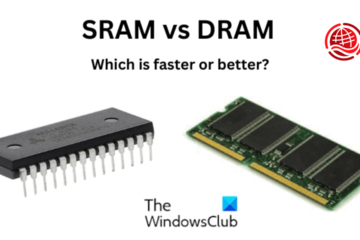QR, or Quick Response, has become ubiquitous in today’s digital landscape. These square-shaped barcodes may seem simple at first glance, but they hold a wealth of information and offer numerous benefits across various industries.
Introduction to QR Codes
Invented in 1994 by a Japanese automotive company, Denso Wave, QR codes were initially used to track parts in manufacturing processes. Since then, they’ve transformed into a flexible resource for companies and individuals.
History of QR Codes
The origin of QR codes traces back to their invention by Masahiro Hara, who sought to create a more effective barcode system. Initially intended for tracking automotive parts, QR codes soon found applications in various industries due to their fast readability and greater storage capacity than traditional barcodes.
How QR Codes Work
QR codes encode information in vertical and horizontal patterns, allowing for quick scanning using a smartphone camera or dedicated QR code scanner. Upon scanning, the embedded data can activate different functions, including launching a website, revealing text, or starting a transaction.
Benefits of QR Codes
Convenience
One of the primary benefits of QR codes is their convenience. Users can access information or act quickly by scanning the code with their smartphone, eliminating the need for manual data entry or typing lengthy URLs.
Versatility
QR codes are versatile and can be used in various applications, from marketing and advertising to inventory management and contactless payments. Their flexibility makes them suitable for businesses of all sizes and industries.
Cost-effectiveness
QR codes are cost-effective for businesses looking to enhance their marketing efforts or streamline processes. With minimal investment required for creation and distribution, QR codes offer a high return on investment.
Common Uses of QR Codes
Marketing and Advertising
QR codes are commonly used in marketing campaigns to provide customers with additional information, promotions, or discounts. Users can access exclusive content or special offers by scanning the code, driving engagement and sales.
Contactless Payments
As mobile payments have gained popularity, QR codes have emerged as a favored means for conducting contactless payments. Payment providers and merchants utilize QR codes for secure and easy transactions, minimizing the reliance on tangible cash or cards.
Ticketing and Boarding Passes
QR codes are widely used for ticketing purposes, including airline boarding passes, event tickets and public transportation passes. Scanning the QR code allows easy validation and access, streamlining the ticketing process for businesses and consumers.
Inventory Management
In sectors like retail and logistics, QR codes are essential for managing and monitoring inventory. Each product or item can be assigned a unique QR code, allowing for accurate inventory control and efficient stock management.
Creating QR Codes
Creating QR codes is an easy task, facilitated by the widespread availability of online QR code generators. Users can customize their QR codes with color, size, and logo insertion options, ensuring brand consistency and recognition.
Best Practices for Using QR Codes
Ensure Visibility
When using QR codes in marketing materials or signage, it’s essential to ensure visibility and readability. Position QR codes in visible spots with sufficient light to ensure they can be scanned effortlessly.
Test QR Codes Before Use
Before deploying QR codes in marketing campaigns or operational processes, testing them across various devices and scanning apps is crucial. This helps identify any potential issues or errors that may affect user experience.
Provide Clear Instructions
To encourage QR code engagement, provide clear instructions on scanning the code and what users can expect upon scanning. This approach reduces confusion and promotes greater engagement with the content of the QR code.
Security Considerations
While QR codes offer numerous benefits, they pose potential security risks, such as phishing attacks or malware distribution. Companies should adopt security practices like encryption and authentication to safeguard QR code data from unauthorized access or misuse.
QR Code Trends
Dynamic QR Codes
Dynamic QR codes, enabling updates to content in real-time and facilitating tracking, are becoming increasingly popular in marketing and analytics. These active codes offer greater flexibility and performance compared to static QR codes.
Social Media Integration
Integrating QR codes with social media platforms enables seamless sharing and engagement. Businesses can use QR codes to drive traffic to their social media profiles or facilitate social sharing of content and promotions.
AR and VR Applications
With advancements in augmented reality (AR) and virtual reality (VR) technologies, QR codes are increasingly used to deliver immersive experiences. Users can scan QR codes to access AR content or participate in VR-enhanced marketing campaigns.
Future Outlook of QR Codes
QR codes are expected to remain relevant and integral to the digital landscape as technology evolves. With innovations such as enhanced security features, augmented reality integration, and IoT connectivity, QR codes will continue to grow and adapt to meet the changing needs of businesses and consumers.
Read Also: Unlocking the Potential: The XCV Panel Explained.
Conclusion
In summary, QR codes have transformed how we retrieve information, conduct payments, and engage with our surroundings. From marketing and advertising to inventory management and security, QR codes offer endless possibilities for businesses and individuals. By understanding how QR codes work and implementing best practices, companies can harness the power of QR codes to enhance their operations and engage customers effectively.
Unique FAQs
- Are QR codes secure?
- While QR codes are not inherently secure, businesses can implement security measures such as encryption and authentication to protect against unauthorized access or exploitation.
- Can QR codes be customized with branding?
- Yes, QR codes can be customized with branding elements such as logos, colors, and images to maintain brand consistency and recognition.
- What are dynamic QR codes?
- Dynamic QR codes allow real-time content updates and tracking, offering greater flexibility and performance than static QR codes.
- How can businesses track QR code performance?
- Businesses can track QR code performance using analytics tools that provide insights into scan rates, user demographics, and engagement metrics.
- What are some creative uses of QR codes?
- Creative uses of QR codes include incorporating them into art installations, scavenger hunts, interactive menus, and educational materials.



